Every year players can expect adjustments to the Winthrop Gold Course, but this year there are some real jaw droppers including two longtime holes disappearing, two brand new holes, and Winthrop’s iconic OB rope getting a major facelift.
It’s a lot to handle for any player or USDGC fan. So sit down, grab your beverage of choice and read up on some of the biggest changes to the Winthrop Gold Course in years.
For a complete look at all course changes, check out the Online Caddy Book.
Happy Trails Former Holes 1 and 2
Let’s start with a fond farewell to the former Holes 1 and 2, which are USDGC Champions in their own right. If we had a retirement dinner for the two it would be overflowing with friends lauding them for a job well done.
#1. Easier Said Than Done
Used since the first USDGC in 1999, Hole 1 was by no means the hardest hole on the course. At 253 feet (A position), many players felt that if they didn’t birdie it, that they were already falling behind. But the layout of this hole combined with the nerves of starting your USDGC round here (after being announced by Official Starter Andy Greene), made this moderately downhill par three deceptively hard.
#2. Roll with It
The par 4, Hole 2 often got lost in the shuffle among Winthrop’s heavy hitters like Hole 5 (the lake hole), Hole 7 (Bamboo Hole), Hole 13 (formerly known as 888’). However, at 629-feet it was the first lengthy hole players faced and one of the few tighter/woodsy holes that the mostly open Winthrop Gold Course possessed. USDGC Staffer Sam Covington spotted the hole for 12 years and loved watching the many roller tee shots fight their way back in bounds.

“I just think that it was a great spectator hole,” said Covington, adding it wasn’t just for big guns. He said less powerful players could throw two solid shots and still get a birdie. “I know some people won’t miss it, but it will be missed,” said Covington.
Why Were These Holes Removed?
The short answer is: the USDGC is growing. More space was needed to accommodate the increasing number of spectators and to eliminate the distractions players were facing on Hole 1’s tee and the green of Hole 2, said USDGC Course Designer Andrew Duvall.
Eliminating Hole 2 created space for a new fan hospitality area (complete with food and other amenities) and a new home for an improved competitor hospitality area that includes a practice putting green that is viewable to fans.
“That’s the professional atmosphere that the USDGC is going for,” said Duvall. Teams from College Disc Golf competing in the USDGC’s Dean’s Cup are expected to gather here too.
So Where Does the Course Start Now?
Good question. The former Hole 3 is now #1. The 389-foot par 3 starts the Championship with a fairway that seems to get narrower each year. Welcome to Winthrop!
Andy Greene has been the official USDGC Starter since the event began in 1999. This will be the first time in 21 years that he will be announcing players from a different location. Although he’s looking forward to some new scenery, he will miss the old spot.
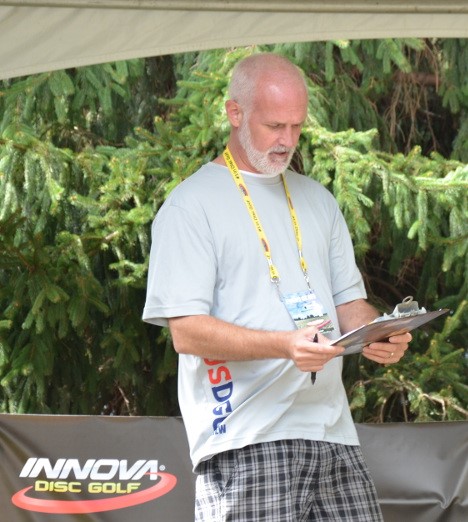
“I’ve kind of gotten attached to that hole. It’s become a pretty special place for me over the years,” said Greene.
We’re Missing Two Holes. Where Do We Make Them Up?
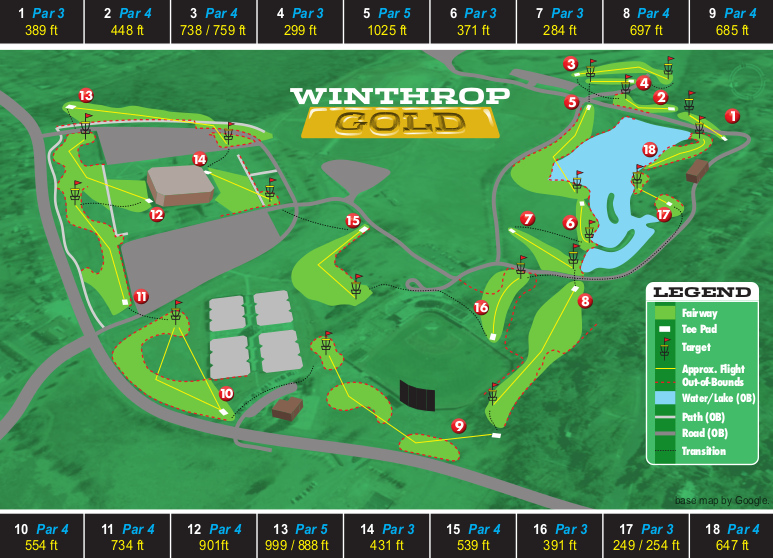
New Hole 3
After completing Hole 2 (formerly Hole 4), players will make the short walk to the golf course where the 759-foot Hole 3 awaits (738 feet for Pin B). The tee and much of the fairway of the par 4 take place in the golf course fairway used for the US Distance competition and player warm up in past years.
Talk about wide open; the fairway is the widest at Winthrop, but after about 600-feet, the hole funnels through two big pine trees, which will act as a double mando. After clearing the mando, the green is still about 140 feet away and noticeably sloped downward, so players looking for birdie will want to plan their tee and their approach shot with that in mind, Duvall says.
Here’s a look a the new Hole 3. *Note: Drop Zone to double mando has moved since story/caddy book was originally posted.
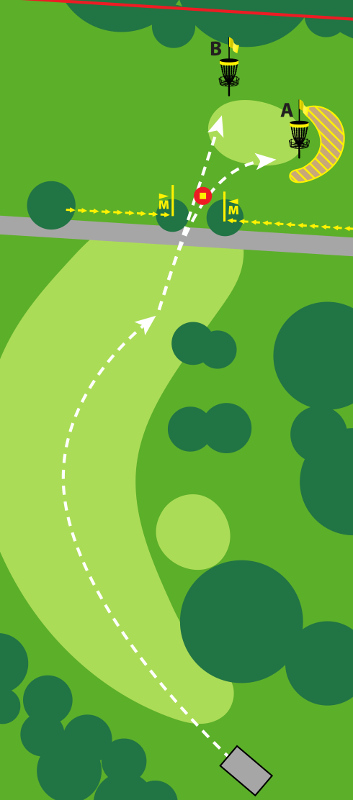
New Hole 4
After the great wide open of Hole 3, things tighten up with this 299-foot par 3. Using two sets of double mandos, one near the tee and one leading to the green, Duvall wanted to recreate a wooded Carolina disc golf hole without much woods to speak of. Clearing the first mando, won’t be much of an issue, according to Duvall, however the second mando should present some risk vs. reward quandaries for the thrower. He added that this hole could act similar to Hole 17 in which players breeze through it in practice but may second guess themselves when it counts. Someone call In-N-Out Burger for a sponsorship of the new “Double-Double” hole.
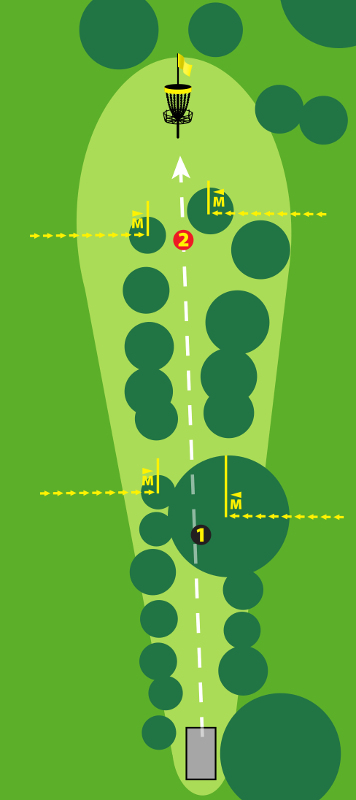
*The New Hole 4’s green then reconnects with the same Gold Hole 5 used in previous years.
Stadium Disc Golf’s Dilemma
In both new holes, Duvall says you’re trying to give two open holes a more wooded feel. The tug of war between wooded and open holes is one of the dilemmas with Championship hole design, Duvall says. Wooded courses are often favored because they are the origin of the game. However, the best way to showcase these players during Major competition is through a spectator and broadcast friendly open course that demands accuracy, according to Duvall. The trick to creating a compelling course for the player and fan is to find a mixture of both. And sometimes you have to be creative and use mandos to do so, he said.
Even the Yellow Top Rope isn’t Safe
Nothing is immune to change in our effort to improve … even the iconic yellow top rope that’s been used since the very first championship. In the past, both top and bottom OB markings have been used. The top consisted of yellow (or sometimes red) rope that ran through green stakes and served as a visual guide of the OB. The bottom, which is still being used and is the official OB marker, is the bright yellow bottom string run along the ground.
Duvall will be testing to see if new stakes without the famous yellow top rope will do the job.
Why No More Top Rope?
Being a few feet off the ground made the top rope a pretty good visual marker, but it also made it an occasional nuisance for players with lies nearby. Plus, cameras had a hard time picking it up and after a few rounds it did not look as professional as it should, according to Duvall.
New Stakes
The green top rope stakes will be replaced by roughly the same number of white stakes. Each will be about a foot off the ground and have a two-inch cap colored either yellow for hazard or red for OB.
https://youtu.be/Jzh1cR_IBIo
Duvall reminds everyone that this is an experiment. “If it fails miserably, we will have no problem going back to the rope,” he said light-heartedly.
Hole 5’s Tee is back in Original Position
Great. So, where’s the original position? For those unaware, for much of the USDGC’s history, the tee of the 1,083-foot Hole 5 has been on solid ground (near the southeast corner of the College Lake Rd loop) and not a wooden dock above the lake. Though quite scenic, Hole 5’s dock tee didn’t make for very exciting disc golf, says Duvall. A spike hyzer or forehand followed by another of the same was all many players did to position themselves for their approach across the lake – which according to Duvall was the only exciting shot to watch of the three.
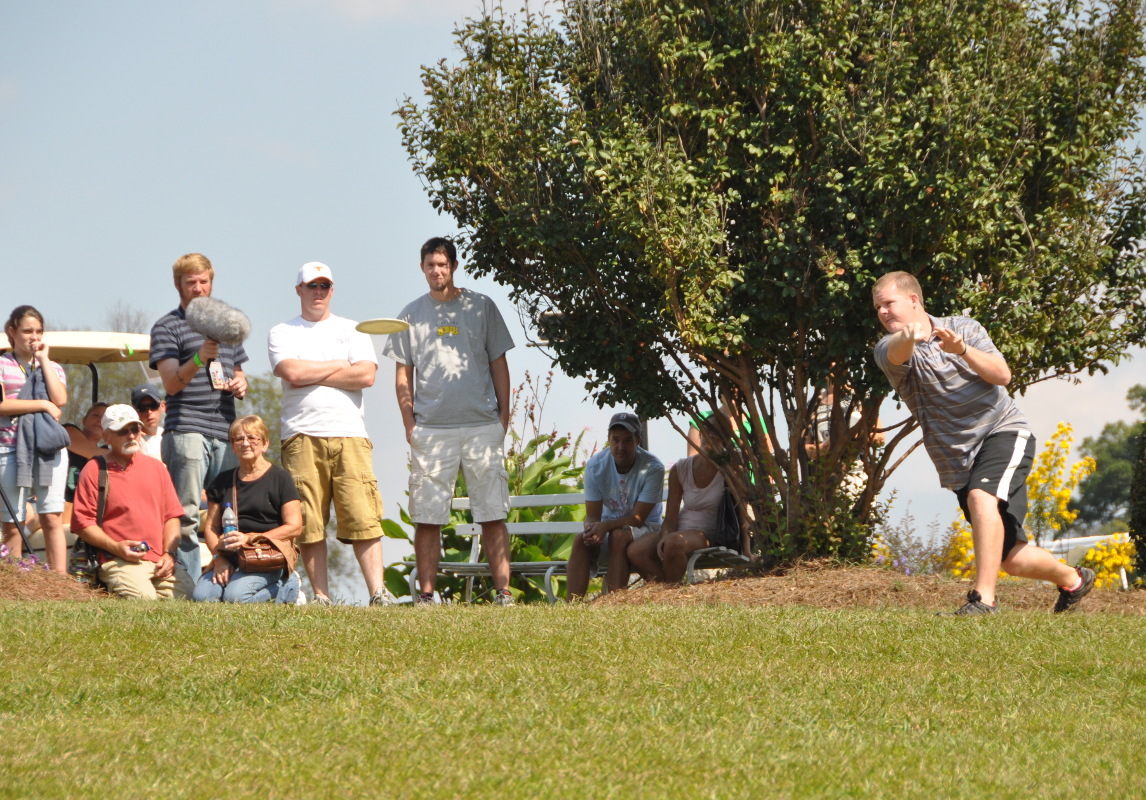
With the tee pad back in its original location (for the first time since 2012), it brings the mystery back to the tee shot. Standing at the tee, the undulating fairway is such that you can never really tell where the lake begins.
“The more you try to bite off, the more you’re likely to get in the water,” said Duvall, adding that the eagle opportunity may open back up for some. Paul McBeth still remains the only person to eagle the hole.
With the original tee creating more of a downhill shot, it will be interesting to see what players, who appear to be throwing further, can do since it was last in that position, said Duvall.
Other Notable Changes
Friendlier Hole 15 Drop Zone
We listened to input from players and created a chance to save par if they miss the mandatory. *The drop zone is now located beyond the triple mando, right of the line of trees on the right side of the fairway. The courageous players will now have a chance to save par.
More Tricks Up Their Sleeve
Just because the former Hole 2 is gone, doesn’t mean the wooden pillars (or pillars of justice as they were known) that protected the target will disappear too. Look for these to find a home or homes elsewhere on the course. Plus, Duvall said he’ll be experimenting with new obstacles and rope patterns on 6, 9, 10, 11 and 12 to make some of the approaches more engaging.
Thanks for Reading
After reading this thorough run down on Winthrop changes you’ve probably long finished your beverage of choice and have moved onto your ice cream of choice (Be sure to leave some for others in your house).
Though it’s sad to see some things vanish like former Holes 1 and 2, Winthrop Gold stays relevant by changing. By doing so we get to experience new Winthrop tests like the new holes 3 and 4 and the memories they will create. And sometimes we even get to welcome back old friends like the original Hole 5 tee. Hope everyone enjoys the championship.







